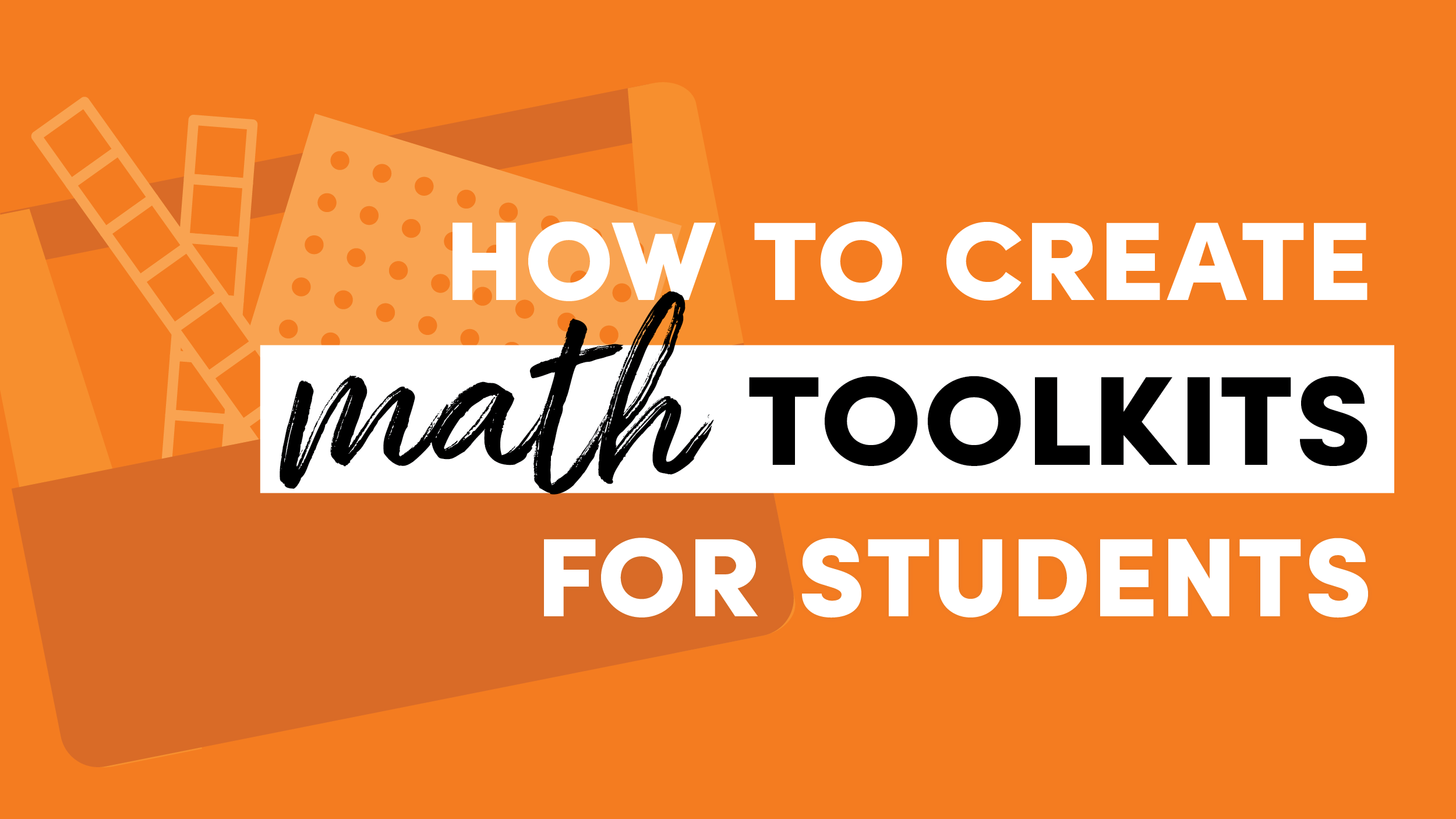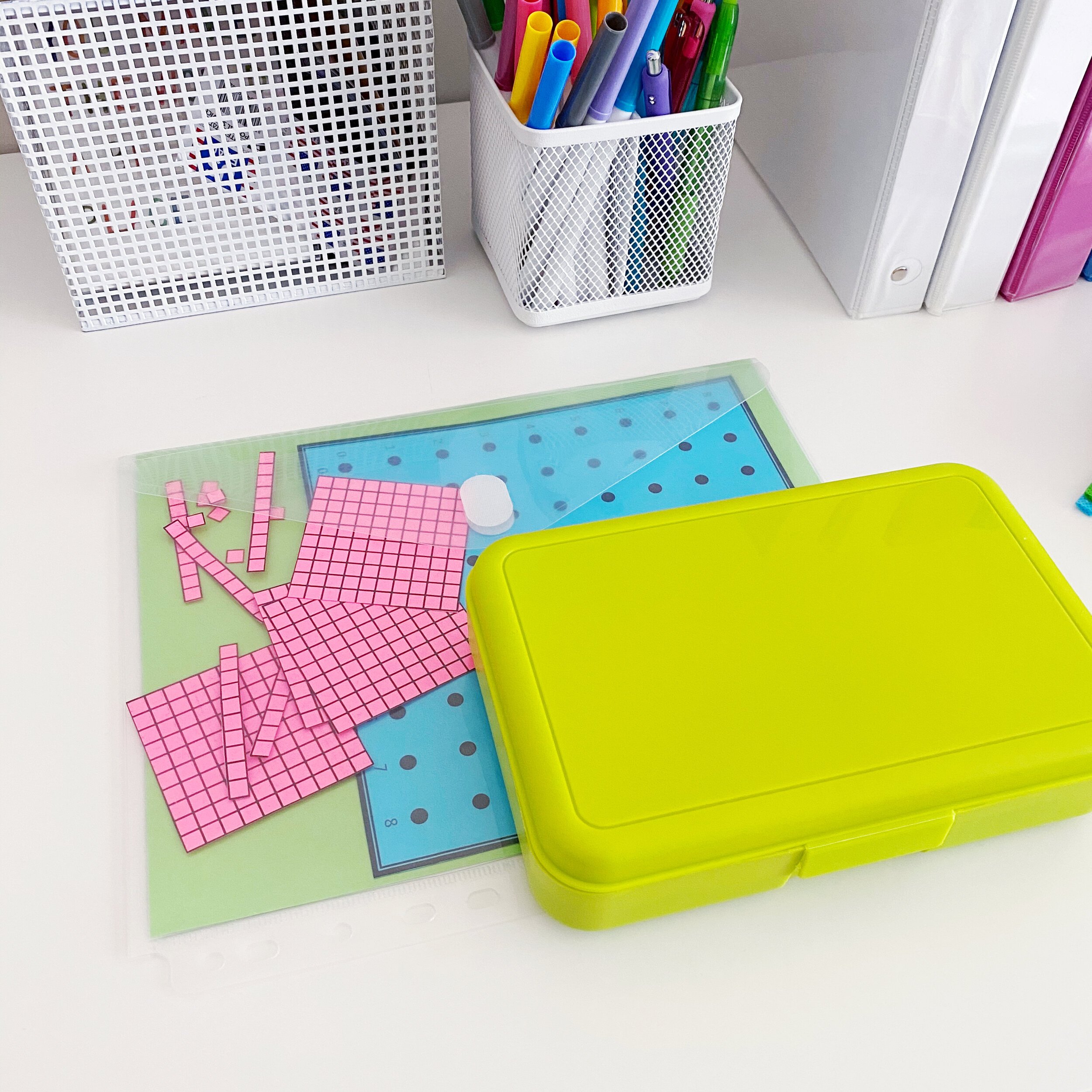How to Create Math Toolkits for Your Students
“What will school look like next year?” is the question every teacher has right now. So many potential plans being thrown around makes it really challenging if you like to use your summer months to organize and prepare for next school year!
One concern I am hearing from the thousands of teachers going through the Math Manipulatives in Upper Elementary Email Series is how we are going to be able to give students hands-on learning experiences when students may or may not be in classrooms. If they are in classrooms, they may or may not be able to share supplies, which unfortunately includes math manipulatives.
We know students are much more engaged and learn math best when the learning is hands-on, so we’re going to have to get creative!
If you’re wanting to create hands-on learning experiences for your students in the fall, I’ve got great news for you… We WILL be able to keep learning hands-on and I’ve got a few ideas to help you out!
Personal Math Toolkits
If students end up not being able to share supplies, creating math toolkits for each student will be essential! Giving students access to both their own set of math manipulatives and math tools will be really helpful in keeping the learning hands-on for students. So how do you make math toolkits for your students?
Decide on a Storage System
You don’t have to use a fancy container for students’ math toolkits. A hard pencil box from the dollar store and a sealable binder envelope are two inexpensive, yet durable storage items that can hold all the manipulatives and math tools that you choose to add to students’ math toolkits!
Choose Your Math Manipulatives
There are many options for how to include manipulatives in students’ math toolkits including divvying up the classroom manipulatives, purchasing foam manipulatives, or creating printable manipulatives. I’ve had several teachers ask which manipulatives to include in students’ math toolkits. In thinking about the core math concepts for 4th and 5th grade, these are the manipulatives I’d prioritize including:
Base-Ten Blocks
Pattern Blocks
Fraction Tiles
Place Value Disks
Centimeter Cubes
Geoboards
While math manipulatives are a must as you’re considering what to include in students’ math toolkits, there are a few support additional math tools that would be helpful too!
Select Your Support Tools
If students are unable to share supplies in the fall, the following math tools are highly recommended to include in students’ math toolkits:
D.I.Y Dry Erase Boards are a must-have tool in students’ math toolkits. Making them is easy! Simply insert a piece of cardstock in a plastic page protector or dry erase pocket for an easy, inexpensive, portable dry erase board.
Reference Sheets that students would typically use in class such as place value charts or multiplication charts may be useful to include in students’ math toolkits if schools move to distance learning.
Measurement Tools, such as rulers and protractors, are also nice to include and can easily be printed and laminated for students’ toolkits if they don’t have access to these items already.
I created a resource just for upper elementary math teachers to help you put together students’ math toolkits. It includes tips for making your math toolkits durable, checklists, and printable math manipulatives! Download the math toolkits for upper elementary FREEBIE below!
Want the Math Toolkit Checklist and Printables?
If you are an upper elementary teacher, be sure to grab the Math Toolkit Checklist and Printable Math Manipulatives for FREE! These two freebies will help you begin putting together students’ personal math toolkits for next year.
Whether students end up not being able to share supplies or if schools decide to shift to distance learning partway through the school year, these math toolkits will be especially helpful for students to take home with them. If you happen to be 1-to-1 with technology, you have another option for using math manipulatives too!
Virtual Math Manipulatives
Whether students are working in the classroom or at home, we can continue to create hands-on learning experiences using virtual math manipulatives. Even though online math manipulatives aren’t technically hands-on, they do give students the opportunity to make the same critical math connections that they would have made with physical manipulatives. So what are your options for online math manipulatives?
My two favorite websites for virtual math manipulatives are Math Learning Center and BrainingCamp. Math Learning Center is free and BrainingCamp has a small annual fee. I won’t go in-depth on these options because I shared about both websites in the post Getting Started with Virtual Math Manipulatives, but it is good to know that these two websites are an option for you if you are wanting to continue to use math manipulatives in the fall.
I know next school year may not look how we want it to. But the little bit of good math news? You don’t have to give up your dreams of creating amazing learning experiences with math manipulatives! Your math block, whether in person or online, can still be an engaging, meaningful part of students’ day!


